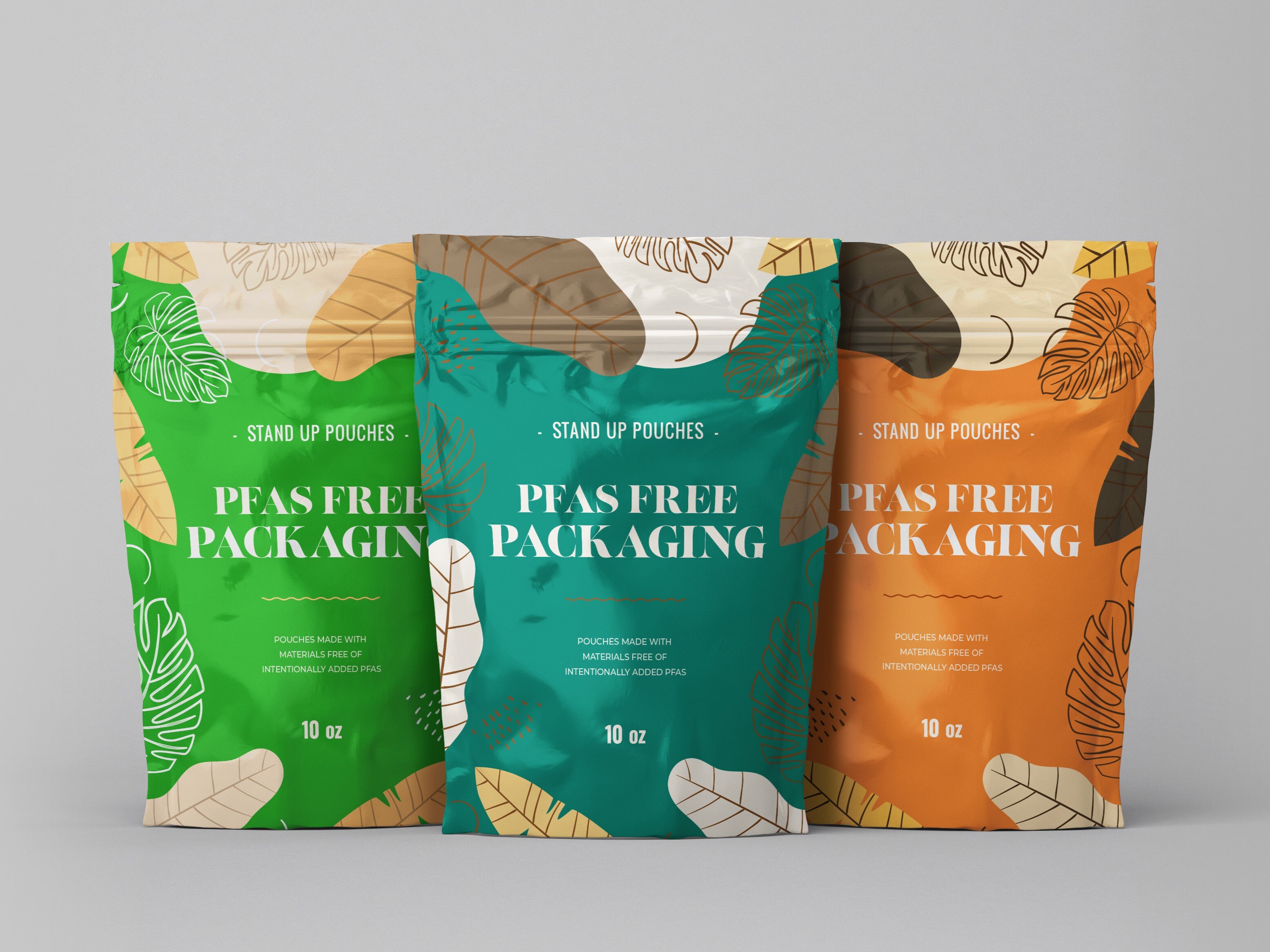PFAS is an acronym that encompasses PerFluoroAlkyl (PFA) and PolyFluoroAlkyl Substances (PFAS), tongue-twisters by any standard. This chemical group includes thousands of PFAS that are found in a wide range of consumer, commercial, and industrial products. But what else do we know about PFAS?
For starters, PFAS were first introduced in the 1940s and 50s when manufacturers began shifting their focus from supporting the American war effort overseas to supporting American economic growth and consumer conveniences at home.
We also know that PFAS are found in all kinds of materials, from clothing to furniture fabrics to carpeting and more—including food and beverage packaging. A key example in this category is grease-resistant paper, such as you find in fast food containers, burger and burrito wrappers, microwave popcorn bags, pizza boxes, paper plates, candy wrappers, and many flexible pouches.
What Else Do We Know About PFAS?
Take the short quiz below to test your knowledge. These facts about PFAS are provided by the Environmental Protection Agency, Food & Drug Administration, and other federal and industry authorities. All questions are True/False.
- PFAs are synthetic and do not occur naturally.
- PFAs are widespread, long-lasting chemicals that break down very slowly over time.
- PFAS create an environmental hazard both during and after their use.
- Many PFAS are found in the blood of humans and animals all over the world.
- PFAS are present at low levels in a variety of foods due to chemical leaching from food containers and the contamination of certain food sources.
- PFAS are found in water, air, and soil at landfills, Superfund sites, downstream rivers and lakes, and similar locations throughout the U.S. and around the globe.
- PFAS can be found in public drinking water systems and private wells.
- PFAS chemicals are used in foams to extinguish certain types of fires, including fire extinguishers in airports, shipyards, chemical plants, refineries, and other facilities.
- PFAS are produced or are used at many plants that manufacture electronics, textiles, papers, inks, and other goods.
- Exposure to certain PFAS has been linked to harmful health effects in both humans and animals.
- High levels of exposure to PFAS over time have created serious health hazards.
Every one of these statements is True. These facts indicate the profound impact of PFAS on our environment and our health. They also highlight the harmful consequences of our universal reliance on the numerous chemical-driven conveniences developed decades ago.
PFAS Are Common in Food and Beverage Packaging
According to the Industrial Packaging Alliance, since the original stand-up pouch was introduced in the 1960s, flexible pouches and other flexible packages have become a mainstay of modern food and beverage packaging.

Many flexible packaging solutions are specifically used to protect food and beverage products as they move from plant to warehouse to retailer to consumer. These protective applications are progressively transitioning to materials that do not contain PFAS as eco-focused printers and packagers, like SunDance, continue to demand non-PFAS substrates such as inks, films, and laminates.
Initiatives to Reduce PFAS in Packaging and Printing
With federal legislation still under consideration, at least six states have passed legislation limiting or prohibiting the use of PFAS in packaging. Most state laws distinguish between the intentional incorporation of PFAS in production and their unintentional use. As just one example, Maryland law prohibits the use, sale, and manufacture of food packaging containing intentionally added PFAS as of January 1, 2024.
Environmentally responsible businesses aren’t waiting for legislation but are spearheading their own initiatives to reduce the use of PFAS in manufacturing and production processes. SunDance is among the leaders in offering printing and packaging products that do not contain any intentionally added PFAS either as raw materials or as processing aids. Working closely with our suppliers, we have actively moved away from PFAS in favor of organic, biodegradable, recyclable, and compostable packaging, and sustainable coatings for printed materials.
What You Can Do
As a product marketer, designer of flexible packaging, or other packaging professional, you can lead your organization toward more responsible packaging for food products, liquids, nutraceuticals, and similar consumables.
Becoming aware of the opportunities to reduce your environmental impact is a great start. An important next step is to thoroughly review your current packaging materials, including engaging with your suppliers to identify their upstream sources and materials specifications. The more you learn, the more effective you can be in safeguarding the environment by reducing PFAS in packaging.
Innovation That Delivers Creative and Safe Packaging Solutions
SunDance fosters a culture of packaging innovation and environmental responsibility that enables package designers and product marketers to choose the most creative and safest packaging solutions for each unique product. Discover the excitement you can generate with eye-catching flexible packaging. Learn more about child-resistant packaging. Explore new offerings of cartons and small boxes. Choose from a stunning array of printing and finishing options guaranteed to make your products shine. It’s all right here at SunDance!












